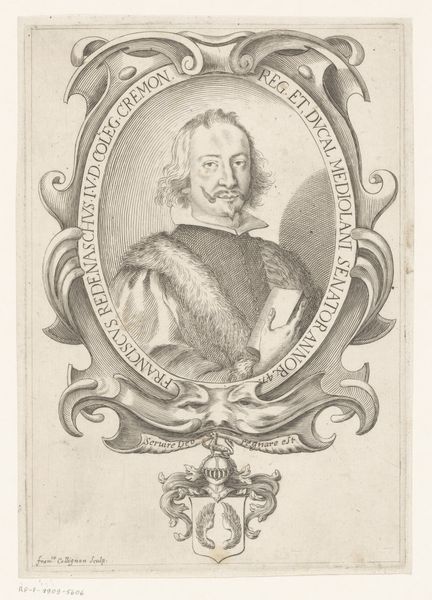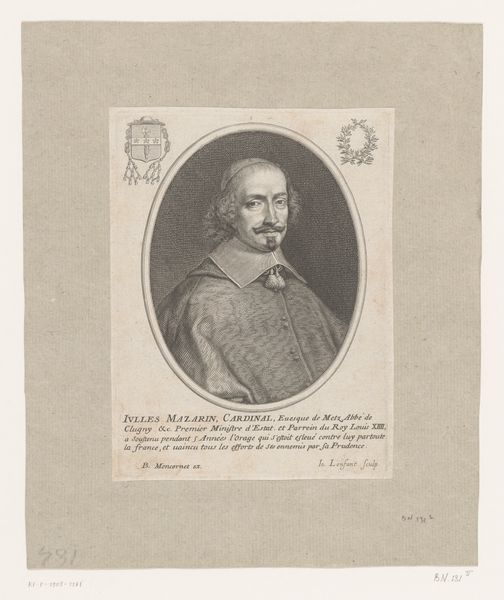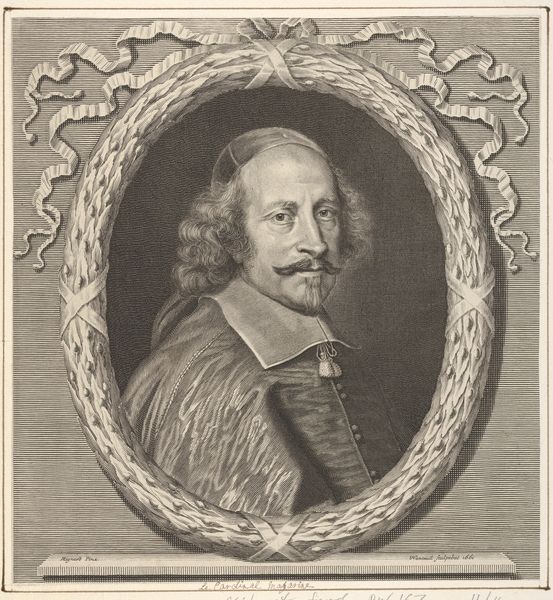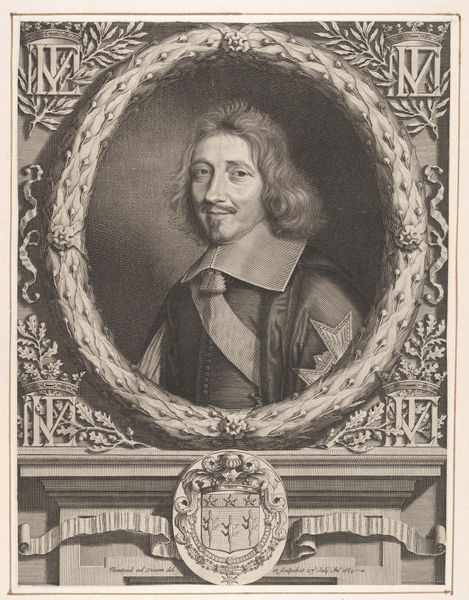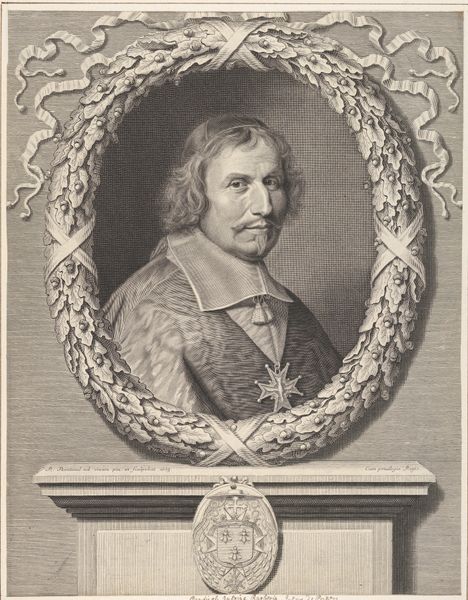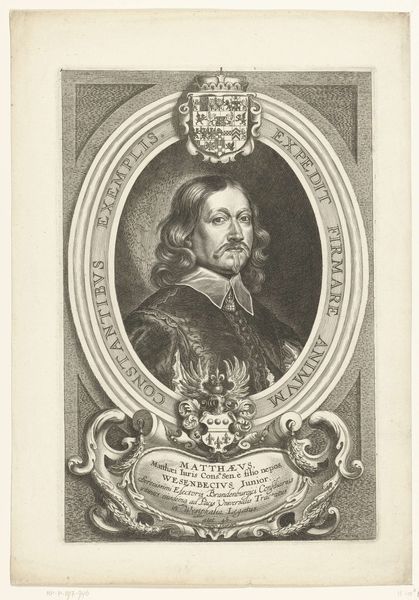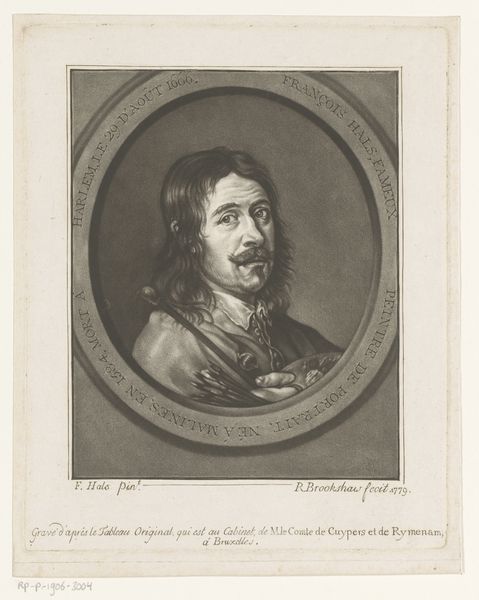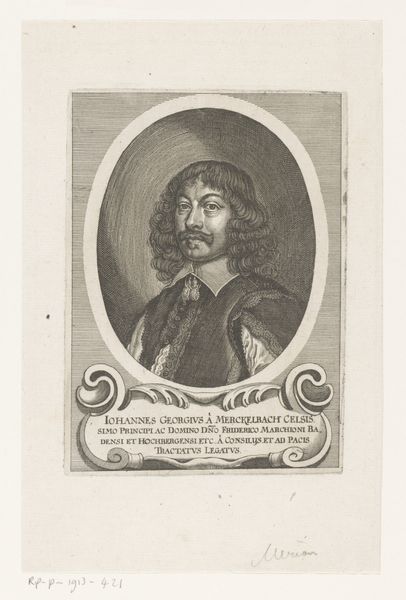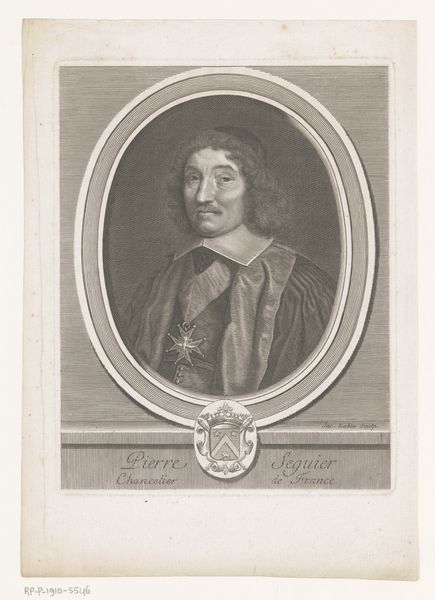
print, engraving
#
portrait
#
baroque
# print
#
engraving
Dimensions: height 167 mm, width 130 mm
Copyright: Rijks Museum: Open Domain
Curator: Here we have Claude Randon's engraving of François Du Quesnoy, created sometime between 1648 and 1670. Editor: It's quite striking, isn't it? There's a somber tone, and the oval portrait gives it a feeling of restrained dignity. The fine line work is remarkable. Curator: Indeed. The use of line is fascinating here. Note how the engraver renders Du Quesnoy's likeness. Look closely at the texture of the hair and the detailed depiction of his facial features; they give us a real sense of the man's character. Editor: Considering Du Quesnoy's prominence as a sculptor of the Baroque era, the surrounding symbolic details provide contextual clues. The inclusion of the putto and the geometrical tools, for instance, situate him squarely within that historical moment, connecting his work with intellectual and artistic developments of the time. Curator: Precisely! The portrait itself adheres to a formal structure, contained within the oval frame, but Randon adds these seemingly spontaneous details. See the loose rendering of the leafy surround? Editor: It creates a very strong tension. We are constantly negotiating the man, the myth, and the visual shorthand that has now come to represent the period. In short, it really is representative of the Baroque era's grandeur, despite its somber tone. The subject’s position, subtly looking askance, contributes to a compelling complexity, and you see that the tools of his trade appear at the base. The frame device around Du Quesnoy allows the print to function on several levels: commemoration, information, and art object. Curator: And thinking about the object as a whole is incredibly useful here. We could consider the various modes of the symbolic as it pertains to both the print's function and Du Quesnoy's persona as it developed through his practice. Editor: Absolutely. When analyzing through this lens, this image not only provides us a glimpse into an individual's life, but allows insight into the culture and the political image-making apparatus that existed in seventeenth-century Europe.
Comments
No comments
Be the first to comment and join the conversation on the ultimate creative platform.

